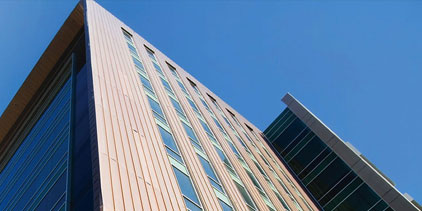A spotlight on patient capital: the importance of building homes – and communities – that stand the test of time
Posted on: 2017-02-02
In our latest blog, our Principal, Ashley Wheaton discusses a topic close to his heart: patient capital.
As you may be aware, patient capital means taking an approach where investors are willing to make a financial investment in a business or project with no expectation of turning a quick profit; instead, it’s about more substantial returns at a potentially much later date. Although patient capital can be considered a traditional investment instrument, it’s recently come to the forefront with the rise of environmentally and socially responsible ventures within the Built Environment.
This is because it can be used not to maximise immediate financial returns for investors but maximise social and environmental impact – and increase long-term property value (even if it’s 10s of years later). Forward-thinking organisations are using it to meet the massive challenges of global urbanisation – and solve tough problems like well-being and sustainability.
For example, in pre-industrial cities streets were by necessity walk-able – everyone depended upon by-foot access to places of work and trading as most activities had to be connected by a continuous pedestrian path. But industrialisation meant cities became less connected and interactive, with streets used as service roads to connect residential zones with commercial and industrial areas. Today, there’s growing evidence of the adverse impacts of this type of development and, an increasing understanding of the benefits of well-built residential areas, walk-able communities and improved socio-physical structure.
High quality buildings and mixed-use communities not only encourage better health and well-being, and are more sustainable – they also lead to higher returns for the landowner, albeit over a longer period. The long-term development at Poundbury, for instance, now has over 2,000 jobs and 1,400 homes on site – offering an improved quality of life, less need for the use of a car being of one the benefits. Patient capital allows companies to create such communities by increasing a project’s equity to outweigh the higher cost of development – and, therefore providing time for comprehensive planning and unified organisations, transforming the Built Environment.
For me patient capital is about building well-built and aesthetic homes that people will still want to live in a 100 years time – think about today’s sought after Georgian villas, Victorian terraces, and even the 1930s semis. And communities that not only have safe, cost effective, energy efficient, fit-for-purpose, well lit and ventilated homes – but ones that encourage crime reduction, sustainability, effective traffic control, and ultimately well-being and happiness.
I believe improving the quality of housing is as important as increasing supply. But there’s a real danger that during the current housing boom – with the rush to build a substantial number of new homes due to a chronic shortage – that there will be large numbers of lower quality housing estates created, that fail to create or encourage communities and may even need to be rebuilt before the end of the century.
Urban planning should be future-proof, visionary, creative and inclusive; enabling the delivery of high quality architecture and perfect places for people to live, work and play. However, today, house-building can often be a risk-averse, tick-box exercise – focused on speed, cost-cutting, development control and achieving targets.
It may well be that for some, but it’s time to make a change, and think about building a legacy for Britain and making our homes great again.
For more information on making a case for patient capital, take a look at the Prince’s Foundation – or this recent article in the Telegraph.
To find out more about some individuals making exceptional in-roads and outstanding contributions within the Built Environment, take a look at the write-up of our latest Property Awards.
Don’t forget, you can find us on Twitter, Facebook and LinkedIn, so please keep in touch.

